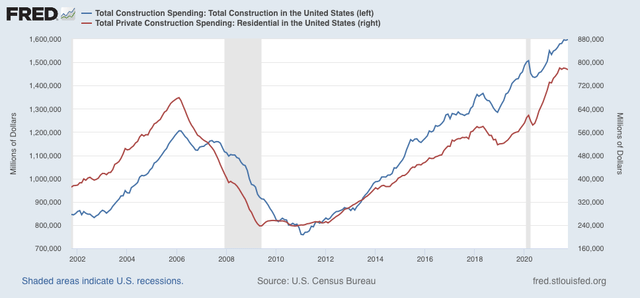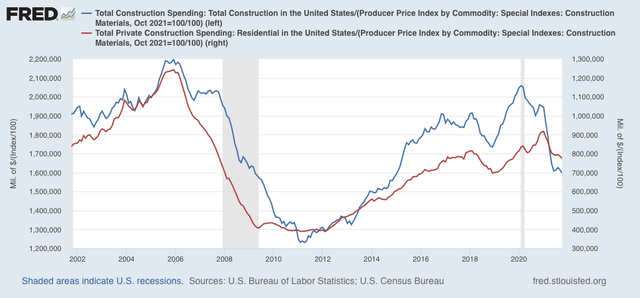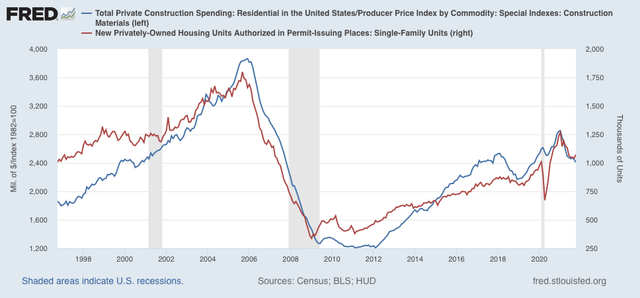Manufacturing still red hot; construction still very cool Our first November data is out this morning with the forward-looking ISM manufacturing report for October, as well as construction spending for October. Let’s take the ISM report first, since it is an important short leading indicator for the production sector, and in particular its new orders subindex. In November the index rose slightly from 60.8 to 61.1, as did the more leading new orders subindex, which rose from 59.8 to 61.5 (note the breakeven point between expansion and contraction is 50): Both the total index and the new orders subindex have been running extremely hot almost all year, and there is simply no sign of a significant softening yet. This forecasts a strong
Topics:
NewDealdemocrat considers the following as important: construction, manufacturing, US EConomics, US/Global Economics
This could be interesting, too:
NewDealdemocrat writes JOLTS revisions from Yesterday’s Report
Bill Haskell writes The North American Automobile Industry Waits for Trump and the Gov. to Act
Bill Haskell writes Families Struggle Paying for Child Care While Working
Joel Eissenberg writes Time for Senate Dems to stand up against Trump/Musk
Manufacturing still red hot; construction still very cool
Our first November data is out this morning with the forward-looking ISM manufacturing report for October, as well as construction spending for October.
Let’s take the ISM report first, since it is an important short leading indicator for the production sector, and in particular its new orders subindex. In November the index rose slightly from 60.8 to 61.1, as did the more leading new orders subindex, which rose from 59.8 to 61.5 (note the breakeven point between expansion and contraction is 50):

Both the total index and the new orders subindex have been running extremely hot almost all year, and there is simply no sign of a significant softening yet. This forecasts a strong production side of the economy through mid-year 2022.
Turning to construction, during October in nominal terms overall spending including all types of construction rose 0.2%, from an upwardly revised -0.1% for September, while spending on the leading residential sector declined -0.5%, and is off -0.8% from its June peak:

Adjusting for price changes in construction materials, which jumped by 1.2% in October, “real” construction spending declined -1.0%m/m, and “real” residential construction spending declined -1.7%. In absolute terms, “real” construction spending has declined sharply – by -18.4%) – since its peak in November 2020, while “real” residential construction spending has declined -15.5% since its post-recession peak in January of this year:

While total construction spending declined by more than it had before the Great Recession, the decline in residential construction spending, while increasingly substantial, remains nowhere near the big decline it suffered before the end of 2007, in this series that only dates from 1993. Comparing it with single family permits:

Confirms the slowdown, but no recession level decline, shown by the latter.
